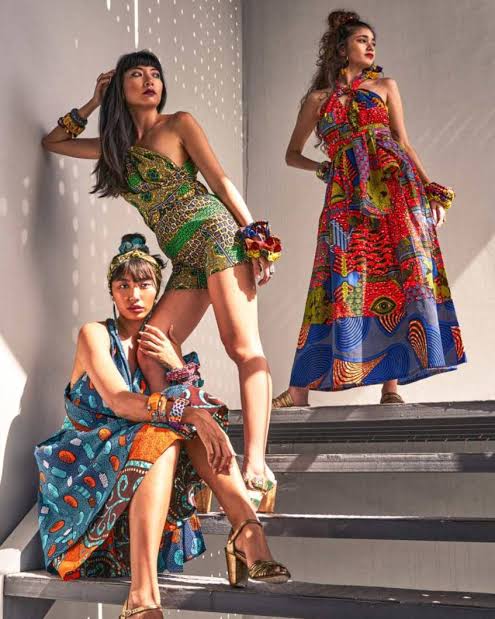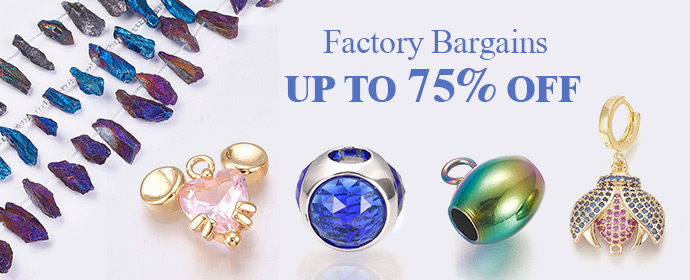Fashion is a way to show who you are, but it also has a real effect on our planet. Things like fast fashion’s effect on the environment and the harmful chemicals in many clothes are big problems, causing damage to the Earth and even impacting our health. But imagine if your clothes could not only reflect what you care about but also be good for you and the planet! If you choose to buy clothes in a mindful, eco-friendly fashion way, you can have a wardrobe that’s stylish and makes a positive difference.
Here are some tips on how to make eco-friendly fashion choices that are great for both you and the environment.

Photo credit: Pin page
1. Choose Natural, Organic Fabrics
One of the biggest things you can do in embracing sustainable fashion is to select fabrics that are gentle on your skin and the environment. Traditional cotton, for instance, is pesticide-reliant and water-hungry, while synthetic materials such as polyester shed microplastics into the environment.
Why This Matters: Organic materials are cultivated without toxic pesticides or fertilizers, and they use less water, so they are much kinder to the planet. On top of that, they tend not to contain the poisonous chemicals used in synthetic counterparts, so they are better for your skin.
Eco-Friendly Fashion Fabric Choices
Organic Cotton: Cultivated without artificial pesticides or fertilizers, it’s gentler on your skin and the environment.
Hemp: A biodegradable and naturally strong material, hemp uses little water and can grow without the use of chemicals.
Bamboo Fabric: Bamboo fabric is naturally moisture-wicking and antibacterial, eco-friendly, and soft, but ensures it’s made sustainably.
Linen Fabric: From the flax plant, linen fabric is biodegradable, uses less water than cotton, and is naturally breathable, which is perfect for hot weather.
Pro Tip: Check for certifications such as GOTS (Global Organic Textile Standard) or OEKO-TEX Standard 100 to guarantee the fabrics are organic and chemical-free.

Photo credit: Eco-Friendly Change
2. Support Ethical Brands with Transparent Practices
What’s the use of sustainable fabrics if they’re made under unethical conditions? Ethical fashion is more than just the material—it’s about buying from brands that care about fair wages, safe working conditions, and transparency in their supply chain.
Why This Matters: Ethical brands are dedicated to minimizing environmental damage while upholding workers’ rights. This eliminates the hidden costs of fashion that hurt people and the planet.
How to Select Ethical Brands
Fair Trade Certified: They guarantee fair wages and healthy working conditions for the people who sew your clothes.
Transparency: Seek brands that publicly disclose information on their sourcing, production practices, and sustainability initiatives.
Local Production: Buying from local or regional brands minimizes the carbon footprint of long-distance shipping and supports ethical labor practices.
Pro Tip: Investigate brands thoroughly. Most companies these days provide in-depth information on their production and sourcing processes, so you can make an educated decision.

Photo credit: extra.cw
3. Invest in Timeless, Quality Pieces
These days, it is convenient to buy cheap fashionable clothing that will soon be outdated. However, the ecological cost of repeatedly replacing them in the long run is high. Rather, invest in high-quality timeless clothing that is designed to last.
Why This Matters: Buying fewer, better-quality items is helping to minimize overall demand for new resources, energy, and labor. Additionally, high-quality items frequently employ superior materials safer for your body and well-being.
Eco-Friendly Fashion Alternatives to Quality Items
Long-Lasting Materials: Leather, wool, and silk, properly sourced, last significantly longer than their synthetic counterparts.
Timeless Pieces: Invest in high-quality, timeless pieces that will never go out of style. A well-fitting blazer, a well-fitting pair of jeans, or a well-cut dress will be worn for years without ever going in and out of fashion.
Tip: Spend less but more. When shopping, spend on pieces with timeless worth that you can wear for years to come.

Photo credit: CNA Lifestyle
4. Opt for Secondhand and Vintage Fashion
One of the most environmentally friendly options you can use is shopping vintage or secondhand. Purchasing used clothing not only keeps pieces from going to a landfill, but it decreases the need for new clothes to be manufactured.
Why This Matters: The secondhand market is a great force in limiting the waste and carbon footprint of the fashion world. In addition, vintage items tend to have a one-of-a-kind, high-quality look that endures.
Where to Shop
Thrift Stores: From neighborhood charity shops to edited secondhand boutiques, there’s a universe of secondhand fashion waiting to be found.
Online Marketplaces: Sites such as Depop, Poshmark, and ThredUp have a vast array of second-hand clothing, shoes, and accessories.
Vintage Boutiques: Vintage boutiques stock one-of-a-kind, well-preserved items that tend to be higher in quality of craftsmanship.
Pro Tip: When purchasing second-hand, inspect for wear and tear, but don’t forget, a bit of repair can make an item even more unique and personal.

Photo credit: OliveAnkara
5. Go for Low-Impact, Vegan Fashion
Vegan fashion isn’t simply a matter of steering clear of leather—it’s about selecting materials that don’t harm animals or the planet. Several conventional leather, wool, and silk substitutes are extremely resource-hungry or chemically treated. Fortunately, vegan fashion substitutes are becoming more creative and available.
Why It Matters: Vegan fashion options typically incorporate environmentally friendly, plant-based materials or cutting-edge textiles that minimize environmental damage and are not based on animals. In addition, most vegan companies adhere to cruelty-free and sustainable practices.
Vegan Fashion Options
Mushroom Leather: Piñatex (derived from pineapple fibers) or mushroom leather (Mylo) are biodegradable substitutes for conventional leather.
Cork Fabric: Eco-friendly, vegan leather alternative produced from cork oak trees. It is strong, light, and environmentally friendly.
Recycled Materials: Products created from recycled plastic bottles, upcycled textiles, or recycled cotton minimize waste and reduce the carbon footprint.
Pro Tip: Check for labels such as PETA-approved vegan or the “Global Recycled Standard” to ensure the sustainability and cruelty-free status of vegan products.

Photo credit: Vogue Singapore
6. Mindful Care and Repair of Clothing
One of the key aspects of eco-friendly fashion is prolonging the lifespan of your wardrobe. Rather than discarding items after being worn a handful of times or sustaining a minimal rip, ask yourself how you can repair and take care of them to wear them longer in rotation.
Why It Matters: The more you care for your wardrobe, the lower your waste rate. Prolonging your wardrobe also serves to save you money and diminish overall consumption.
Caring for and Repairing Clothes
Less is More and Wash Cold: Too frequent washing consumes energy and weakens your garments. Opt instead to spot clean when practical and wash clothes on cold.
Mend Rather Than Replace: Basic mends such as sewing on a button or mending a hem can extend your clothing’s lifespan by years. There are ample online guides on basic garment mending.
Store Correctly: Correct storage such as hanging tender items, folding knitwear, and storing garment bags avoids undue damage.
Tip: Master the art of simple mending techniques, or acquire the services of a local tailor who can bring new life into your garments.

Photo credit: Instagram
7. Consider Clothing Rental and Swap Services
For situations where you want something special but do not wish to purchase something new, clothing rental and swapping services are a great choice. It can range from renting an expensive outfit for a wedding to clothing swaps with friends or in a neighborhood group.
Why This Is Important: Renting and swapping clothes decreases demand for new items, which lessens overproduction and waste within the fashion system. It’s an excellent solution to have the ability to choose from a collection of clothes without adding to the fashion cycle.
Popular Services Offered
Rent the Runway: Rent designer apparel for daily wear or special occasions.
ThredUp and Swap Society: Sites that allow you to swap clothes with others, enabling you to update your wardrobe without purchasing new ones.
Pro Tip: If you’re not sure whether a trend will last, rent first to determine if you want to make a long-term investment.

Photo credit: Vogue
8. Educate Yourself and Stay Informed
The more you learn, the better decisions you can make. Keep yourself updated on the environmental and health effects of your fashion buys, as well as the newest sustainable materials and brands.
Why This Matters: By learning, you can make more thoughtful purchases, know the life cycle of your clothes, and select brands that reflect your values.
Where to Learn
Books: “The Conscious Closet” by Elizabeth L. Cline and “Fashionopolis” by Dana Thomas are great reads.
Documentaries: “The True Cost” and “RiverBlue” provide detailed examinations of the environmental and human consequences of the fashion world.
Social Media and Blogs: Follow eco-friendly fashion influencers, brands, and organizations to keep current with new styles and eco-friendly choices.

Photo credit: Luxiders Magazine
Conclusion: Fashion with a Conscience
When you opt for these eco-friendly clothing choices, you’re doing more than just boosting your well-being and promoting fair labor practices. You’re also pitching in to safeguard our planet for future generations. Eco-friendly fashion involves a shift in mindset, but the benefits down the line, for both your wardrobe and the planet as a whole, are worth it.
So, why not move towards a more mindful closet and make choices that reflect your commitment to a healthier, more sustainable way of living? After all, the clothes you wear can make a difference in the world, one thread at a time.
Author: Raja Bahar Khan Soomro
3. Eco-Friendly Fashion: A Sustainable Revolution in 21st Century
4. How to Write Trending Fashion Blog Articles: Proven Tips and Tricks for Fashion Blog Writers
Recommend0 recommendationsPublished in apparel, Bathing Suits, Bridal, celebrity fashion, Hairstyles, Health, Jewelry, Makeup, Our Fashion Passion, Petite, Plus Size, Pop Fashion, Shoes, Skin Care, street style, Uncategorized








